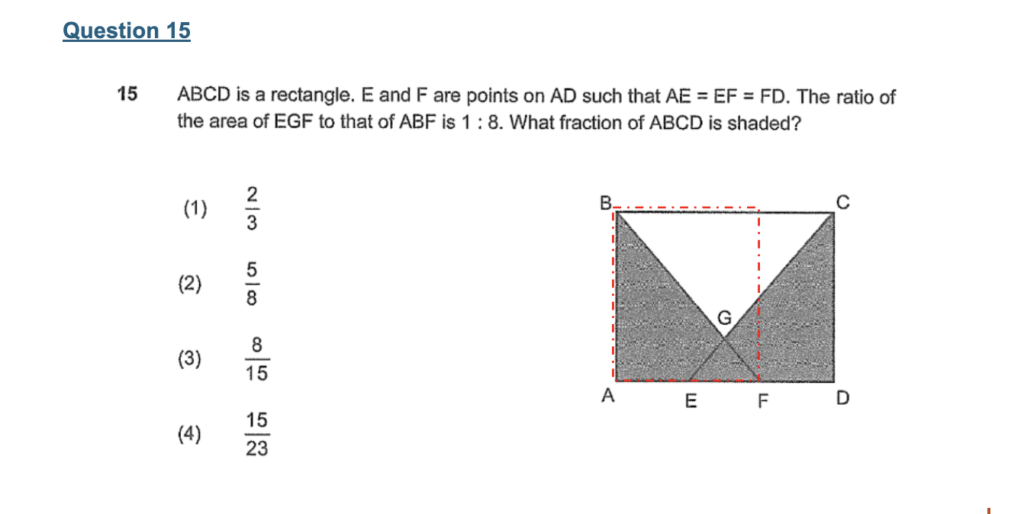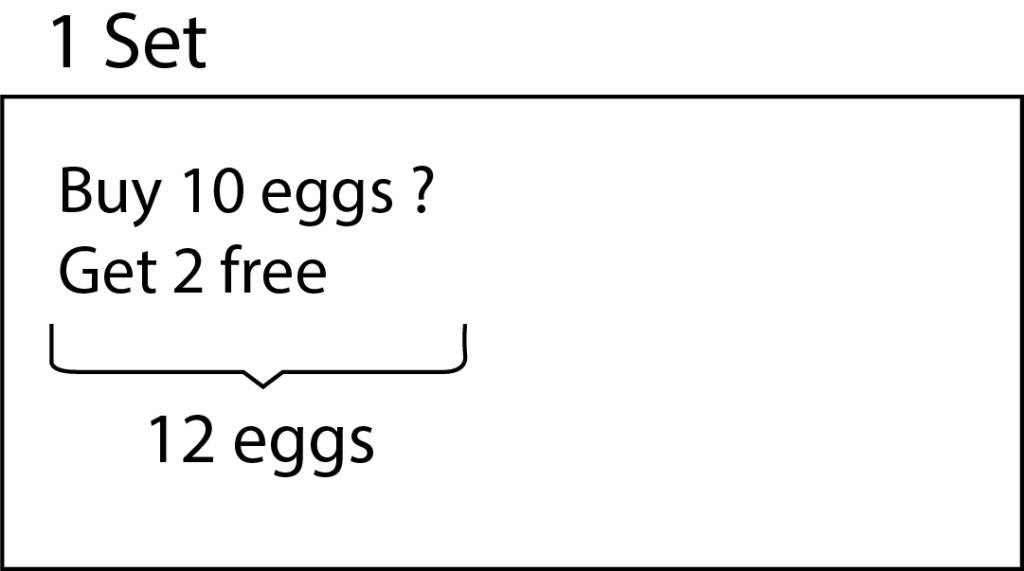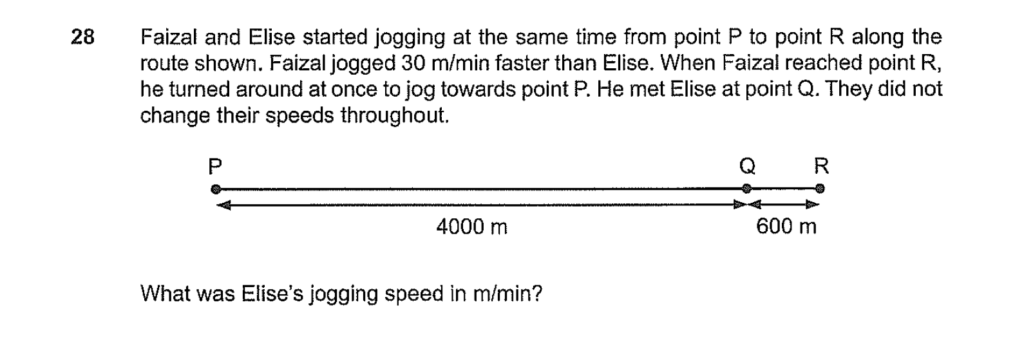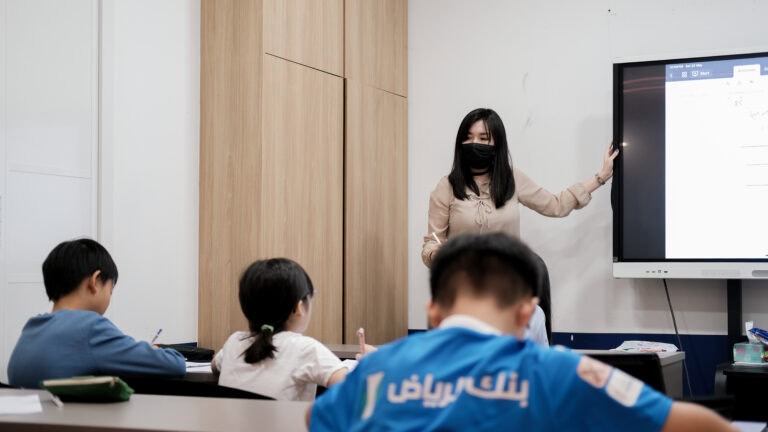The PSLE Math paper is broken down into Paper 1 and Paper 2. Although Paper 1 consists of only 1 or 2 mark questions, it does not necessarily mean that they are easier than the questions in Paper 2! We have seen our fair share of challenging Paper 1 questions that seem straightforward at first glance, but actually test students on their ability to read between the lines. Students are also tested on their ability to calculate quickly and accurately since the use of a calculator is prohibited for Paper 1.
Let’s take a look at the trickier questions from the 2023 PSLE Math Paper 1. Most of these questions test the student’s ability to infer and solve.
Question 7
This is a commonly tested question type that tests students on their ability to compare fractions. If you noticed, the lowest common multiple of 12, 7, and 10 exceeds 100. Most students will see that a common multiple can be found by taking 12 × 7 = 84, then multiplying it by 10 to get 840. They might also take 7 × 10 = 70, then multiply it by 12 to get 840. That would work, but they would get rather big numbers. In fact, the lowest common multiple is not 840, but 420.
Most students will make the denominators the same in order to compare fractions. Did you know that you can also make the numerators the same? In this case, finding the lowest common multiple of 3 and 7 is far easier than finding a common multiple of 7, 10, and 12.
If you were to make the numerators the same, the fractions will then become 21⁄36 , 21⁄49 , and 21⁄30 . Will sharing 21 slices of cake with 49 people give you a bigger portion, or will sharing 21 slices of cake with 30 people give you a bigger portion? This will help us to see that 2130 is the biggest fraction, and 2149 is the smallest fraction.
Therefore, option 4 is the correct answer.
Question 13
For questions that ask for “largest possible number” or “least number of”, students have to note whether they should have a larger proportion of the higher-value item, or the smallest proportion of the higher-value item. In this case, we want the largest possible NUMBER of coins, therefore, we should have as few of the higher-value item (50-cent coin) as possible so that we can have more 10-cent coins that make up the total.
Since there is a mixture of 50-cent and 10-cent coins, we can’t have 0 50-cent coins. Therefore, the minimum number of 50-cents will be one. If there is 1 × 50-cent coin, this means that the remaining $3 — $0.50 = $2.50 will be made up of 10-cent coins. Is it possible to have 10-cent coins amount to $2.50? Yes, it is!
$2.50 ÷ $0.10 = 25
Therefore, the largest possible number of coins in the box is 25 + 1 = 26.
Question 15

This is an interesting area and perimeter question with no numbers given except for a ratio.
If you noticed, triangle EGF is part of triangle ABF. This means that the area of triangle ABF is
8 units and the area of triangle EGF is 1 unit.
AE = EF = FD. This means that each of these lengths is 1 unit.
Triangle ABF has a base of 2u and the rectangle that it is in has a base of 2u. (refer to red dotted box).
Since Triangle ABF has an area of 8u, this means that the rectangle it is in will have an area that is twice of it, which means that the rectangle has an area of 16u. This rectangle has a base of 2u and the same height as ABCD, which has a base of 3u. This means that the red dotted box has an area that is 2⁄3 of rectangle ABCD.
If 2⁄3 of rectangle ABCD is 16u, then the area of rectangle ABCD is 16u ÷ 2 × 3 = 24u.
The shaded portions have an area of 8u × 2 – 1u (overlapping area of triangle EGF) = 15u.
This means that out of the 24u, 15u are shaded.
15⁄24 = 5⁄8
The answer is therefore 5⁄8 .
Question 24
This is a question that tests students on their inferential skills. Females are broken up into 3 categories – youth, adults, and senior citizens. If 50% of the females are adults, what does it say about female youths and female senior citizens? This means that they make up the other 50% of the female members.
Therefore, 50% of the females = 28 + 44 = 72
Part (b) can also be answered easily once students recognise that the number of male members remained the same, but the total decreased. This means that the male members will now take up a larger proportion of the members. Therefore, the percentage of male members would have increased from June to July.
Question 26
26(a) is pretty straightforward. Out of 25 throws, Kalai’s ball passed through the hoop 20 times. This means that the ball did not pass through the hoop 5 times.
For passing through the hoop 20 times, Kalai would have scored 20 × 1 = 20.
For missing the hoop 5 times, a total of 5 × 1 = 5 points would have been deducted.
Therefore, the final score from the first 25 throws would have been 20 – 5 = 15.
26(b) continues from part (a).
Kalai continues for another 5 more throws and ended up with an eventual score of 18.
Did all 5 last throws have the ball pass through the hoop? No.
Had all the 5 balls passed through the hoop, Kalai would have scored an additional 5 marks. However, she only scored an additional 3 marks.
Since the numbers are small, it will not be difficult to do a little guess and check. However, students at TTA have also been taught the Assumption method in the event that they are faced with larger numbers in future. The Assumption method can be easily applied by following the steps: Assume, Difference, Divide.
Assume
Let’s start off by assuming that 5 of her throws passed through the hoop.
In that case, she would have scored 5 × 1 = 5 points.
Big Difference
We know from her final score that she only managed to earn an additional 3 points. This means that there is a big difference of 5 – 3 = 2 points between the assumed total and the actual total.
Small Difference
If we replaced a ball that passed through the hoop with a ball that did not, how many points will Kalai lose?
1 + 1 = 2. Not only did Kalai fail to earn the 1 point, but she also got a point deducted for missing the hoop.
Divide
How many times must we replace a ball that passed through the hoop with a ball that did not?
2 ÷ 2 = 1.
This means that out of the 5 throws, she missed 1 ball, and the other 4 times, the ball passed through the hoop.
The answer for 26(b) is therefore 4.
Question 27
This question involves a promotion. Buy 10, get 2 more for free.
Therefore, question 27 is a sets question type.

The first 3 steps of a sets question type are the same:
Big diff/total, Small diff/total, Number of sets
The question gave us the big total of 120 eggs.
Therefore, we will focus on the small difference of a set.
Big total -> 120
Small total -> 12
No. of sets -> 120 ÷ 12 = 10
The question did not tell us how much she paid in total, but how much less she paid. This means that she would have to pay $4.80 more for every single one of the 120 eggs without getting any of them for free.
One set consists of 2 free eggs.
In 10 sets, there will be 10 × 2 = 20 free eggs.
Without the promotion, Mrs Lim would have spent $4.80 more for the 20 eggs that she got for free as a result of the promotion.
20 eggs –> $4.80
10 eggs -> $2.40
Question 28

The tricky part about this question is figuring out the additional distance Faizal jogged compared to Elise. When Faizal had reached point R, Elise had not reached point Q. As Faizal turned around and jogged towards Elise, they met at point Q. By this time, Faizal had jogged the additional distance of Q to R and from R to Q again.
This means that he jogged an additional 600m × 2 = 1200m.
In a min, Faizal jogs 30m more than Elise. How long did it take him to jog 1200m more?
1200m ÷ 30m/min = 40min
Both Elise and Faizal had jogged for 40min before they met at point Q.
In that 40min, Elise managed to cover a distance of 4000m.
This means that her speed was 4000m ÷ 40min = 100m/min
That sums up the trickier questions in Paper 1. Keep an eye out for Paper 2 coming up in the following blog.
At Think Teach, our math lessons are designed to make learning easy and enjoyable, not stressful. We provide challenging questions to push your child’s thinking and help them master commonly encountered problems effortlessly. Our emphasis on consistency ensures that with structured problem-solving techniques, every math question becomes familiar and manageable. Your child won’t see math as an insurmountable obstacle anymore. Remember, practice leads to perfection. If something feels unfamiliar at first, keep practising until it becomes second nature!
This article was proudly written for you by TTA’s Math Team. Our strategy in helping students achieve exam excellence is simply to expose them to every type of question that could come out for PSLE and arm them with our easy-to-apply techniques and would help them approach these questions systematically



